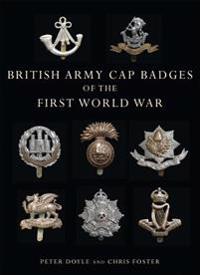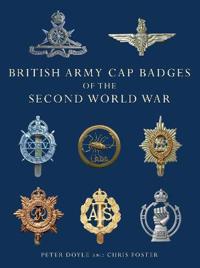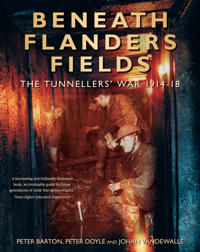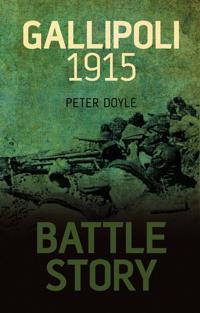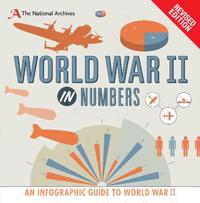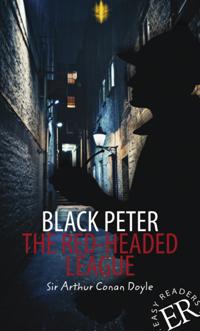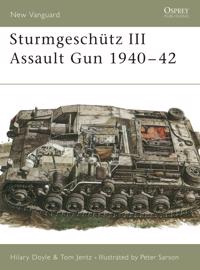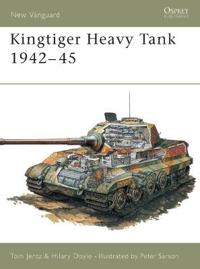British Army Cap Badges of the First World War (Pocket)
avPeter Doyle, Chris Foster, Peter Doyle
ISBN: 9780747807971 - UTGIVEN: 2010-07The fascination with the British involvement in the First World War extends to all aspects of the conflict. The battles and their outcomes; the armies and their leaders; the conditions of trench warfare; and the controversies form part of the growing literature examining every aspect of a war that w[...]
British Army Cap Badges of the Second World War (Pocket)
avPeter Doyle, Chris Foster, Peter Doyle
ISBN: 9780747810919 - UTGIVEN: 2012-02"British Army Cap Badges of the Second World War".
Beneath Flanders Fields (Häftad)
avPeter Barton, Peter Doyle, Johan Vandewalle
ISBN: 9781862273573 - UTGIVEN: 2006-11Whilst the war raged across Flanders fields, an equally horrifying and sometimes more dangerous battle took place underground. "Beneath Flanders Fields" tells the story of the tunnellers' war, which still remains one of the most misunderstood, misrepresented and mystifying conflicts of the Great War[...]
Marketing Management and Strategy (Häftad)
avPeter Doyle, Phil Stern
ISBN: 9780273693987 - UTGIVEN: 200604Marketing Management and Strategy is a concise and practical management guide to the latest ideas in advanced Marketing and Strategy. The authors show how to develop a marketing orientation in the organisation and how this impacts on the ultimate corporate goals of profit, growth and security. They [...]
Value-based Marketing: Marketing Strategies for Corporate Growth and Shareh (Inbunden)
avPeter Doyle
ISBN: 9780470773147 - UTGIVEN: 2008-12-31The Key to Earth History: An Introduction to Stratigraphy, 2nd Edition (Häftad)
avPeter Doyle
ISBN: 9780471492153 - UTGIVEN: 2001-04-30The Key to Earth History: An Introduction to Stratigraphy, 2nd Edition (Inbunden)
avPeter Doyle
ISBN: 9780471492160 - UTGIVEN: 2001-04-30Understanding Fossils: An Introduction to Invertebrate Palaeontology (Häftad)
avPeter Doyle
ISBN: 9780471963516 - UTGIVEN: 1996-04-30Unlocking the Stratigraphical Record: Advances in Modern Stratigraphy (Häftad)
avPeter Doyle
ISBN: 9780471974635 - UTGIVEN: 1998-01-31British Fossils (Häftad)
avPeter Doyle
ISBN: 9780747806868 - UTGIVEN: 200809The fossil-bearing rocks of the British Isles represent life from the last 2,900 million years and the UK is seen by many as the cradle of modern geology. Using the geological map of Britain, expert palaeontologist Peter Doyle offers a comprehensive guide to fossils in the UK, plotting the main foss[...]
Battle Story: Gallipoli 1915 (Inbunden)
avPeter Doyle
ISBN: 9780752463100 - UTGIVEN: 2011-08Gallipoli 1915 remains one of the most resounding Allied defeats of the First World War with both the Allied and Ottoman armies suffering in excess of 200,000 casualties. If you want to truly understand this tragic campaign - read Battle Story. Key profiles explore the Allied leaders and their Ott[...]
Black Peter. The Red-Headed League (Häftad)
avArthur Conan Doyle
ISBN: 9783125352520 - UTGIVEN: 2014-10Sturmgeschutz (Pocket)
avHilary Doyle, Peter (ILT) Sarson, Hilary Doyle
ISBN: 9781855325371 - UTGIVEN: 1996-05The workhorse of the German Army that swept across Poland, France and Russia, the Sturmgeschutz III saw service in all theatres of World War II, both in an infantry support role and as a tank destroyer. Cheaper and quicker to produce than a tank, the assault gun proved a remarkably effective weapon.[...]
The Kingtiger (Häftad)
avThomas L. Jentz, Hilary L. Doyle, Peter Sarson
ISBN: 9781855322820 - UTGIVEN: 199301As World War II entered its later stages and Germany was forced increasingly onto the defensive, the need for fast-moving mobile forces lessened and the Wehrmacht required better protected and more powerfully armed tanks. After debacles against the T-34, Hitler and the Panzerwaffe were determined no[...]

